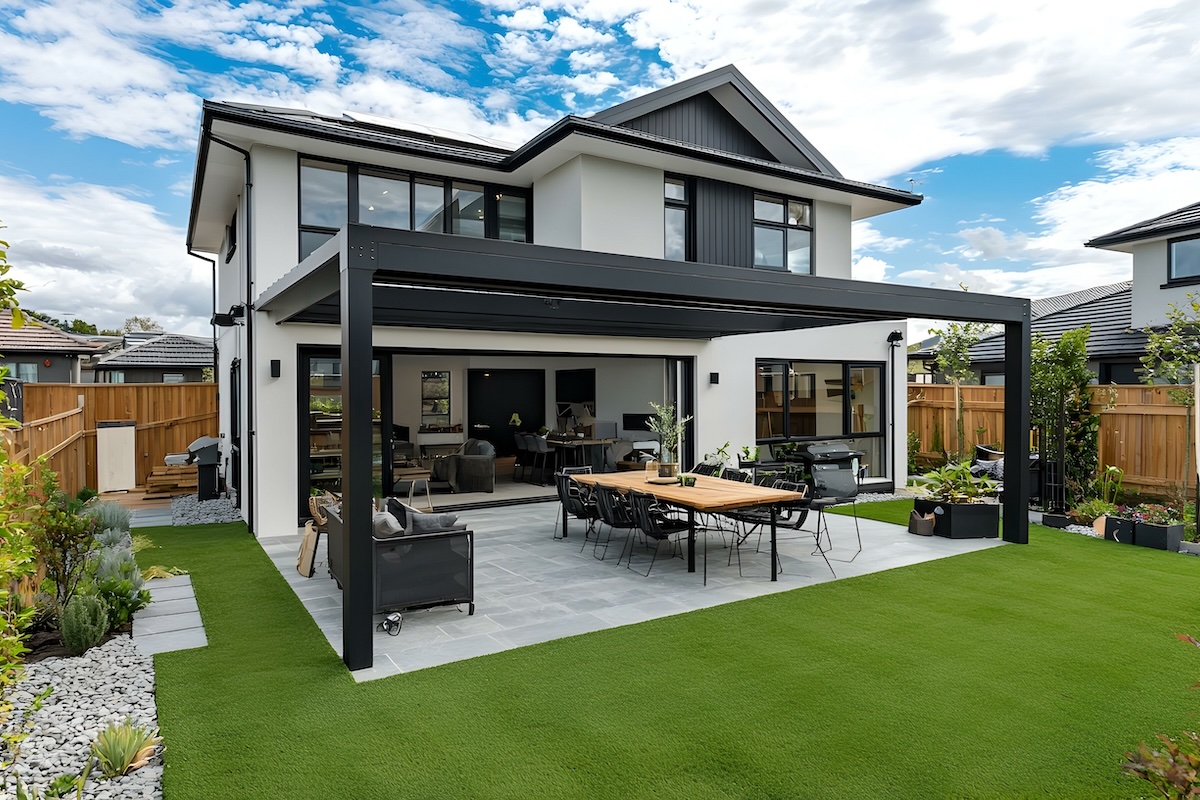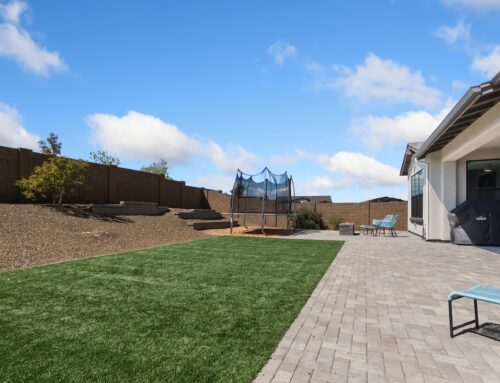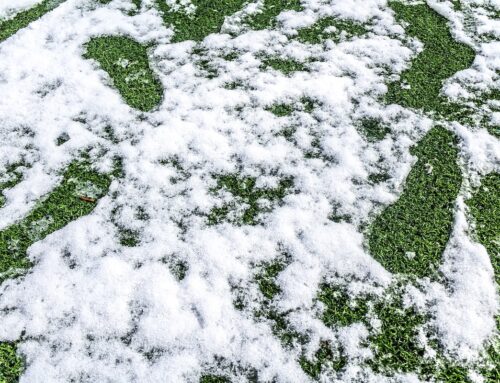Last Updated on March 25, 2025 by ReTurf
Weighing the decision between installing natural grass or artificial turf? It’s one of the most common questions we get—and it makes sense. Whether you’re redoing your backyard, planning a commercial install, or just sick of fighting with patchy, high-maintenance grass, understanding the cost side of things is where most folks start.
Today, let’s take a look at the true costs of natural and synthetic grass over time. We’ll cover upfront expenses, ongoing care, lifespan, and a few other things that don’t always show up on the price tag but matter just as much in the long run.
Is Artificial Turf Really Worth the Investment?
Installation Costs

Let’s be upfront—installing an artificial turf lawn can be a significant investment, especially when compared to throwing down some seed or basic sod. High-quality turf paired with professional installation might run between $5 to $20 per square foot*, depending on a few key factors: the type of turf you choose, how much prep work your space needs, and any add-ons like padding, borders, or special drainage layers.
*Making use of reclaimed used artificial turf can drastically lower the costs of installation.
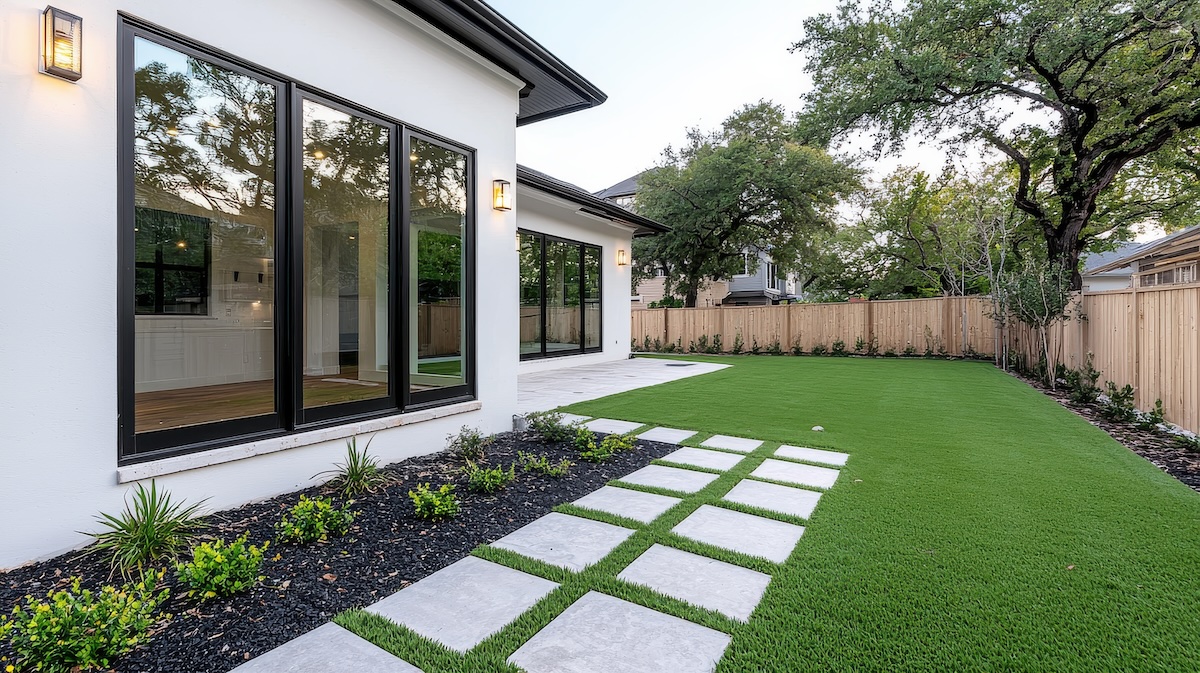
Now, that range might seem wide, but there’s a good reason for that. The cost isn’t just about the turf—it’s about doing the job right, so your lawn looks great, drains properly, and holds up for years with minimal upkeep. Here’s what’s usually included in that upfront price:
- The Turf Itself
Higher-end turf looks the most realistic. It generally has denser fibers, higher face weight, better UV protection, and a more natural look and feel. Some blends are designed to mimic specific grass types—like Kentucky bluegrass or Bermuda—and come with additional features like a layer of thatching to make synthetic turf look even more real. - Professional Labor & Site Prep
Turf installation is a lot more than rolling out a green carpet. Pros will grade and level your space to ensure proper drainage, compact the sub-base with crushed stone or decomposed granite for stability, and install a weed barrier to keep growth from pushing through. A properly prepped base is what keeps your turf from sinking, shifting, or developing drainage issues down the road. - Infill Materials
Most turf systems will require infill—especially for high-traffic areas or pet zones. Common infills include silica sand, rubber granules, or organic options like cork or coconut husk. Infill helps the blades stand upright, improves durability, and adds weight to keep the turf securely in place. It’s normally a one-time addition during the installation. Some areas with a lot of use may benefit from a top-off after a few years, but this is more common for sports fields, and it’s uncommon for homeowners to need to add infill after the installation.
Depending on your goals, you might also choose to add extras like:
- Perimeter edging to keep everything neat and contained
- Drainage enhancements if you’re dealing with poor soil or heavy rainfall
While the upfront price is higher than natural grass, many homeowners find that the long-term benefits—like minimal maintenance, lower water bills, and a consistently green, mud-free lawn—make it well worth it. You can think of it as an investment in your property, as well as your free time.
Ongoing Maintenance
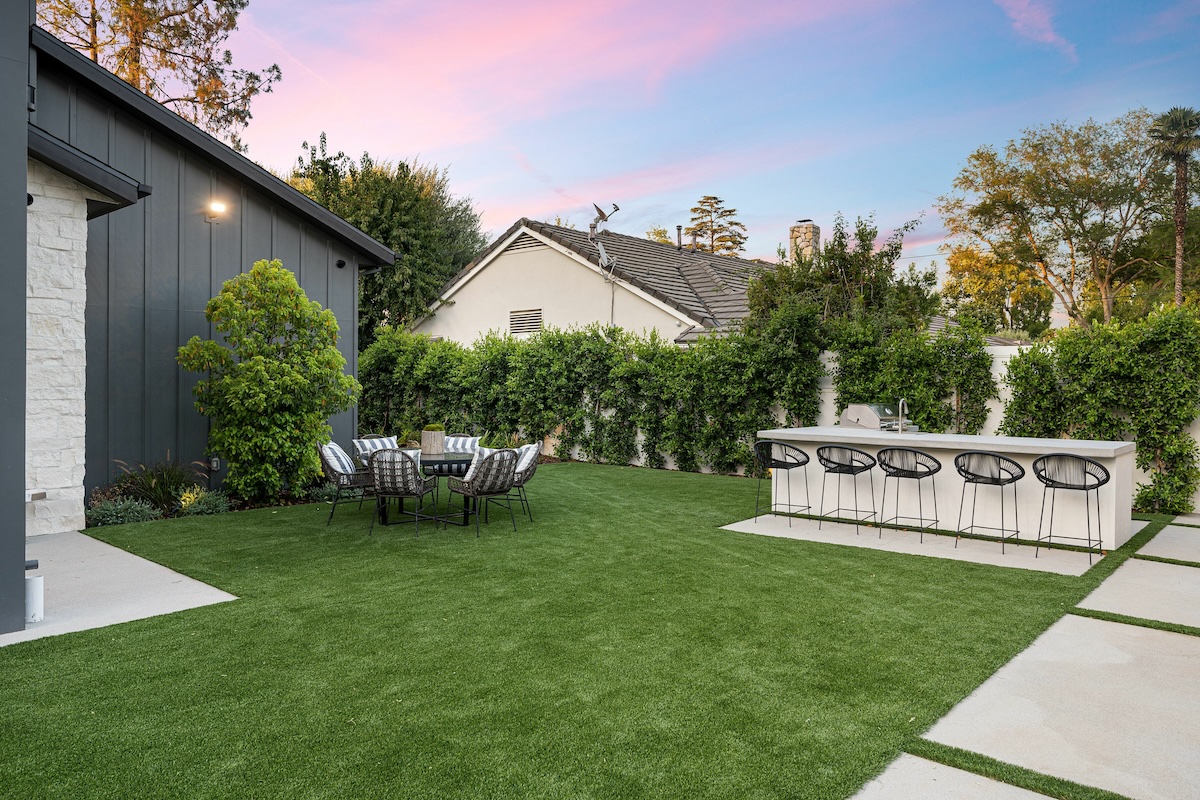
Here’s where turf really starts to shine. Once it’s installed, upkeep is extremely light:
- No mowing or edging
- No watering
- No fertilizer, pesticides, or weed control products
- Just an occasional rinse, maybe some leaf blowing, and a quick brush now and then to keep the fibers standing tall
Note: Some homeowners might do minor infill touch-ups after a few years, especially in high-use areas like play zones or dog runs, but that’s relatively rare.
Lifespan
With good materials and proper care, artificial turf typically lasts 10 to 20 years. It doesn’t wear out quickly, and newer turf blends are built to handle heat, sun, heavy use, and even paws and cleats. After its lifespan, some components can be recycled, depending on the product.
Thinking About Used Turf? Here’s the Inside Scoop.
Used artificial turf—often reclaimed from sports fields, stadiums, or practice facilities—can be an incredibly smart way to cut costs for certain installation types without sacrificing quality. It’s high-grade turf built to withstand years of cleats, sun, and hard use—meaning it’s way tougher than most residential-grade turf to begin with.
Once it’s pulled from the field, the best of it is cleaned, sorted, and resold. And believe it or not, plenty of good quality used artificial turf comes unmarked—no lines, logos, or painted zones—so it blends seamlessly into residential or commercial installs. You’ll often pay a fraction of the cost of new turf (sometimes 90% less) for material that still has plenty of life left.
If budget’s a concern and you’re open to a little creativity, it’s worth asking your installer or supplier about reclaimed options. You might be surprised by the quality—and the savings.
Natural Grass: Lower Upfront, But the Bills Keep Coming
Installation Costs
At first glance, natural grass looks like the more affordable option. You’re typically looking at $1 to $3 per square foot for sod, and even less if you go the seed route.
But that’s just the beginning. Before the first blade of grass takes root, your soil has to be properly prepared. That often means:
- Grading the yard for proper drainage
- Adding topsoil or soil amendments if what you’ve got isn’t nutrient-rich
- Removing rocks, roots, or old turf
- Possibly bringing in equipment or hiring help if the area’s large or uneven
And if you don’t already have one, you’ll likely need to install an irrigation system, especially in climates where rain isn’t reliable. That alone can add thousands of dollars to your project and involves trenching, plumbing, timers, and regular maintenance once it’s in the ground.
Ongoing Maintenance
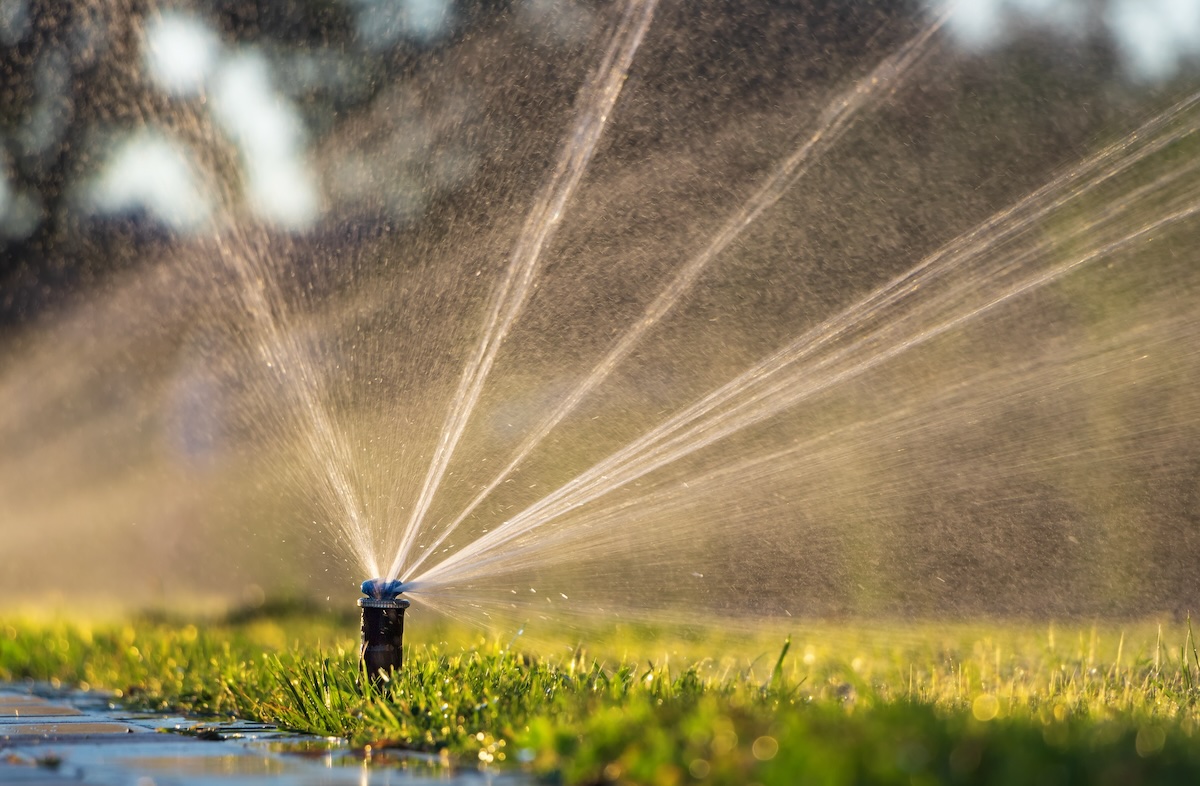
This is where the balance shifts. Natural grass might be easy on the wallet upfront, but it’s a lot hungrier over time.
Many homeowners, especially new homeowners, don’t realize that keeping a lawn healthy, green, and lush isn’t just mowing it on Saturdays—it’s a year-round commitment.
- Watering – In most areas, a healthy lawn needs about 1 to 1.5 inches of water per week. During hot, dry spells, you’ll be running the sprinklers almost daily. If you’re on municipal water, that can send your monthly water bill sky-high in the summer.
- Mowing – Whether you’re the weekend warrior who enjoys the routine or someone who’d rather pay the neighbor’s kid (or a pro crew), mowing takes time, equipment, and fuel. Blades need to be sharpened, oil changed, and machines replaced every few years.
- Fertilization & Treatments – Grass doesn’t thrive on water alone. To keep it green and thick, you’ll need a routine of fertilizers, weed preventers, pest control, and sometimes even fungicides. Each one comes with its own cost—and learning curve.
- Seasonal Repairs & Upkeep – Lawns take a beating. Pets, kids, parties, heavy rains, and summer heat all leave their mark. That means dealing with bare patches, thatch buildup, core aeration, and re-seeding or over-seeding every year or two just to maintain appearances.
If you genuinely enjoy the process—digging in the dirt, fine-tuning your irrigation system, picking the perfect fertilizer—it can be a rewarding hobby. But if you’re juggling a full schedule, dealing with water restrictions, or just want a yard that doesn’t feel like a second job, natural grass can start to feel like more of a chore than a choice.
And unlike artificial turf, which stays green and clean through nearly any weather, natural grass can look pretty rough after a hard freeze, long drought, or one too many backyard barbecues.
Lifespan
Technically, natural grass can last forever—but in practice, it rarely does. The idea of a lawn lasting decades without major renovation assumes ideal conditions: perfect soil, consistent weather, no heavy foot traffic, and someone who’s constantly on top of watering, mowing, fertilizing, aerating, pest control, and weed prevention.
For most homeowners, that’s just not realistic.
In the real world, lawns go through a lot—droughts, muddy winters, dogs, kids, parties, pests (everything from bugs and grubs to moles, voles, and gophers), fungal outbreaks, mower damage, and everything in between. Over time, even a well-loved lawn will develop thin spots, compacted soil, or thatch buildup. That’s why many lawns need partial re-sodding or full replacement every 5 to 10 years, especially in tough climates or high-use areas.
So while the grass itself is a living plant that can regenerate indefinitely, the actual lawn you see and use has a shelf life—and maintaining that “forever” look takes constant effort and recurring costs.
The Long-Term Picture
Upfront vs. Ongoing
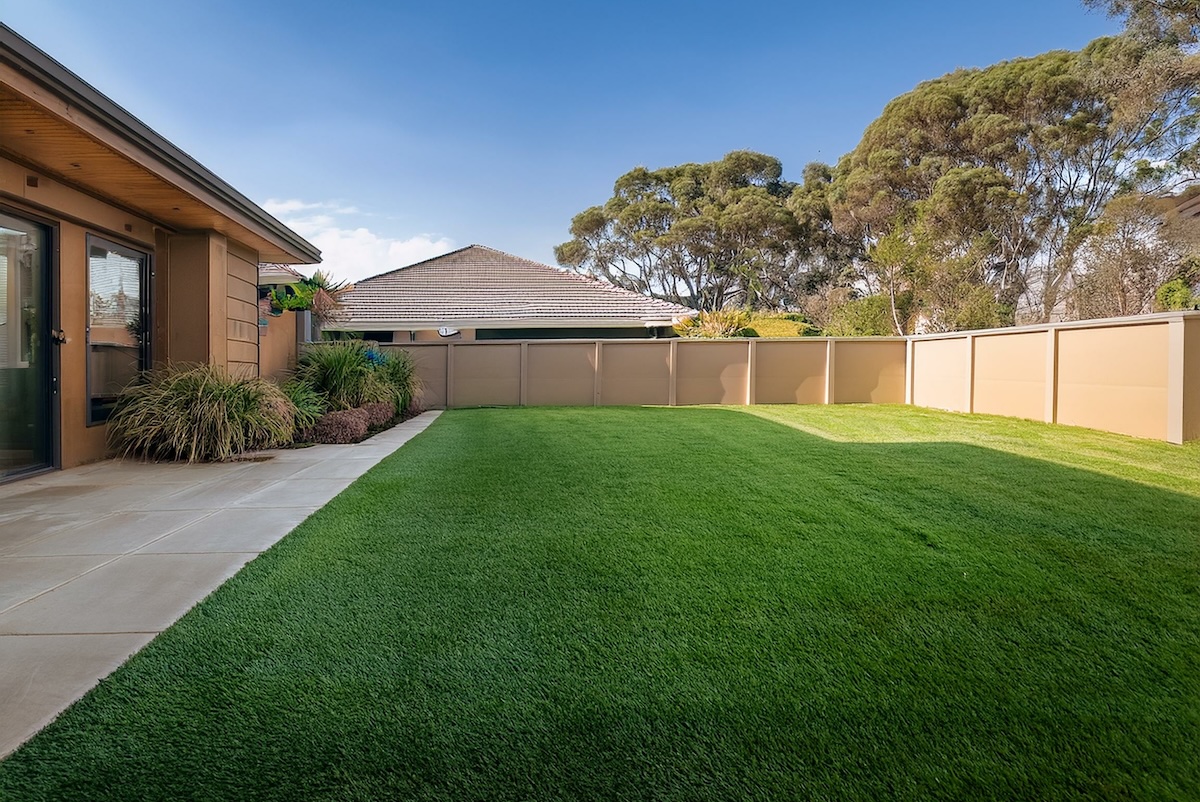
Artificial turf costs more to install than grass, but it more than pays that back over time through lower maintenance and water bills, especially in areas where those costs run high. For homeowners and property managers looking at the big picture, turf often becomes the more budget-friendly option after just a few years.
Water Savings
This is one of the biggest wins. Turf doesn’t need water—just the occasional rinse to freshen it up. Especially when you’re talking about homes in areas with water restrictions or just steep rates and usage fees, the water bill savings can be substantial.
Environmental Considerations
There’s some debate in this area, and it’s worth mentioning. Natural grass supports biodiversity and breaks down naturally over time. But it also uses a lot of water, often requires chemical inputs, and can contribute to runoff pollution. On the flip side, artificial turf eliminates the need for watering and chemicals but most traditional turf products aren’t biodegradable. However, some newer turf products are partially, or in the case of Tempo Turf from Returf, even 100% recyclable.
Looks & Lifestyle
This part’s personal. Some people love the look, feel, and even the smell of real grass. Others just want a lawn that looks great year-round without a ton of hassle.
Turf stays green through heatwaves, cold snaps, droughts, and dog zoomies. It doesn’t get muddy, patchy, or full of weeds. And for families, pet owners, or businesses, it’s one less thing to worry about.
So… Which One’s Right for You?
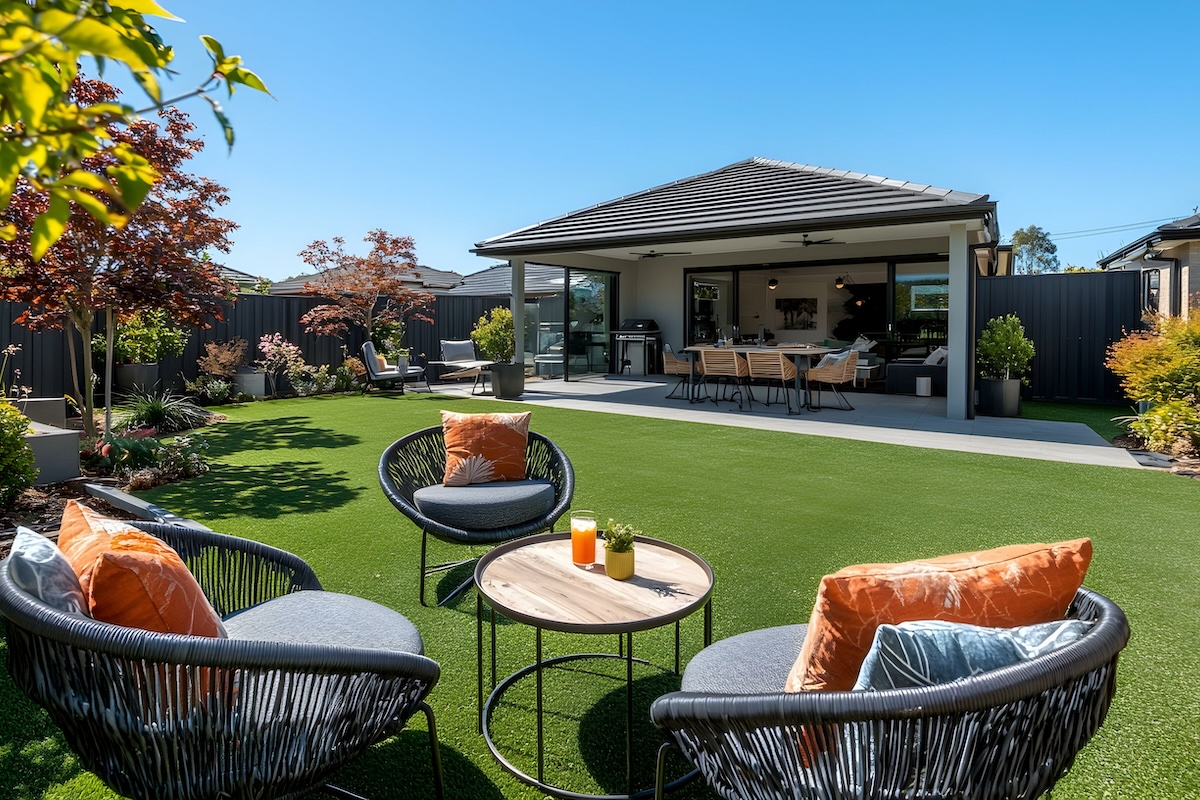
If you’re after low maintenance, consistent looks, and long-term savings—artificial turf is a strong bet. It’s an upfront investment, but one that pays for itself in time, water, and peace of mind.
Natural grass has its charm, no doubt. But if you’re tired of babysitting your lawn—or dealing with high water bills and constant upkeep—turf might be the smarter move.
Still not sure? Give us a shout. We’re happy to walk you through the pros and cons based on your specific space, goals, and budget. There’s no one-size-fits-all solution, but there’s definitely one that fits you.

